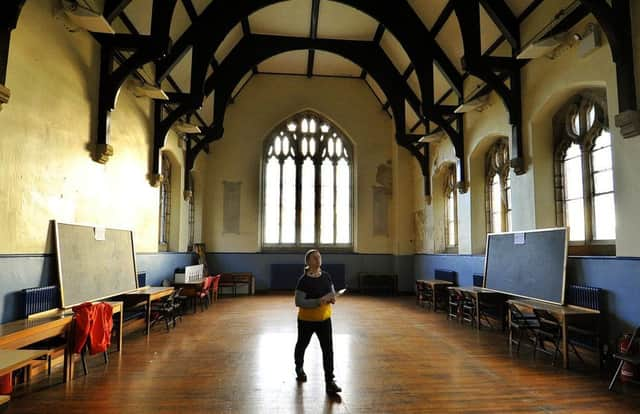Ten generations on, belevolence of the Yorkshire pioneer who founded Maryland bears fruit in his own back yard


George Calvert, a Catholic at a time when England was dominated by the Anglican Church, was the founder of Kiplin Hall, the magnificent, Grade I listed Jacobean house by the River Swale, between the North York Moors and the Hambleton Hills.
He was also Secretary of State to King James I, and eventually the founding father of the American state of Maryland – which he and his son, Cecil Calvert, the second Baron Baltimore, intended as a haven for Catholics fleeing England.
Advertisement
Hide AdAdvertisement
Hide AdThe settlers there were exhorted to leave their rivalries behind, and a law was passed that made tolerance mandatory.
Three and a half centuries later and from across the ocean, his teachings have come full circle – with a gift from George’s 10th great granddaughter to help save the old school across the hills from his ancestral home.
Richmond Grammar can trace its origins back to 1361, but the building put up for it in the 19th century – the one in which the author Lewis Carroll was educated – has been falling into disrepair since the last pupils left in 2012.
A community campaign group is trying to raise £840,000 by June, and has applied for lottery funding to turn it into a community hub that would make it perhaps England’s largest village hall.
Advertisement
Hide AdAdvertisement
Hide AdSince the organisation announced its intentions last year, word has spread far and wide, and not just among the old school’s alumni.
In the county seat of Danville, Illinois, some 700 miles from where her ancestor established the Province of Maryland, Carolyn Wands had discovered the Yorkshire roots on her family tree – and the image of a traditional grammar school conjured images of her own ivy-covered classroom days.
Having already visited what she has taken to calling her “ancestral home” of Kiplin Hall, she donated funds to sponsor the return of the old school bell to the redeveloped building.
“Sometimes, looking for your past can be very disheartening and disappointing,” she said.
Advertisement
Hide AdAdvertisement
Hide Ad“I had always been told that side of the family were Welsh dirt farmers – and so they were on my grandmother’s side but my father’s side kept leading me to Kiplin Hall.”
Admitting she had “always felt a strange draw to England”, Mrs Wands, a widow who deals in property development and historical preservation in the US, said: “I have fallen for North Yorkshire and even more for the wonderful people and those I can now call friends. It is my privilege to help bring back to life to Richmond school.
“The bell project appealed to me because of fond memories of the school and church bells that rang out in my community as a child, drawing people to come.
“Perhaps this bell will draw people to the preservation of this wonderful place.”
Advertisement
Hide AdAdvertisement
Hide AdRemarkably, her family is not the school’s only connection to Maryland. Francis Nicholson, born at nearby Downholme and educated at Richmond Grammar when it was housed in St Mary’s Churchyard, was an army man who became governor of the state in 1694.
James Gravenor, leader of the restoration project, said: “It’s a neat coincidence that the 10th great-granddaughter of Maryland’s founder should be helping to keep alive the name of the school which educated one of his successors.”
Fundraiser Marcia McLuckie added: “In the 1700s and 1800s, it wasn’t the kind of grammar school we would recognise from our lifetime. It was much more aspirational, more like an Eton or a Harrow, drawing pupils from far and wide.”